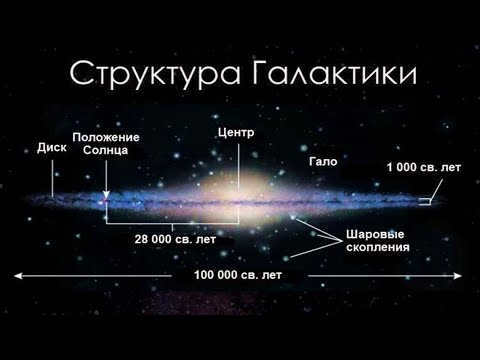
The number of spiral arms in our galaxy, the Milky Way, has been a topic of debate. However, a comprehensive study spanning 12 years and focusing on massive stars has provided evidence to support the existence of four spiral arms.

All the images we have seen so far of the Milky Way galaxy are artistic interpretations, as it is impossible to capture a photograph of it from outside. This illustration, provided by NASA / JPL-Caltech, gives us an idea of what it might look like.
Astronomer James Urquhart from the Max Planck Institute for Radio Astronomy in Bonn, Germany, has discovered that our galaxy actually has four spiral arms, contrary to the commonly believed two. Urquhart and his team have conducted a 12-year study of massive stars within our galaxy, which has led them to this surprising finding. The study has been published today (Dec. 17, 2013) in the Monthly Notices of the Royal Astronomical Society.
Research on the precise structure of the Milky Way has been ongoing for as long as humanity has been aware that we inhabit a galaxy, one of countless collections of stars in the universe. This awareness is relatively recent, dating back less than a century. Unfortunately, we are unable to venture beyond the boundaries of the Milky Way to gain a broader perspective. Consequently, every depiction of the galaxy that you have ever encountered has been nothing more than an artist’s interpretation.
So, what is the true number of arms possessed by the Milky Way? In 2008, images captured by NASA’s Spitzer Space Telescope revealed the presence of two arms. This discovery sparked a passionate debate among scientists.
In Dr. Urquhart’s research, astronomers are attempting to ascertain the shape of our Milky Way galaxy by closely studying its stars and measuring their distance from us. Massive stars are an obvious choice for this investigation due to their intense brightness.
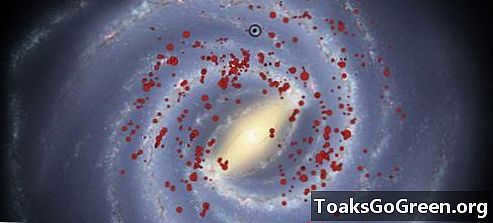
A team of astronomers has reported that an examination of the enormous stars within our own Milky Way galaxy reveals the presence of four spiral arms. Can you locate these four arms among the red dots displayed here, which represent these stars? I must admit that I am unable to do so, but the astronomers behind this study assert that it provides confirmation of the existence of the Milky Way’s four arms. It would be interesting to see if other astronomers concur with this finding. This image is courtesy of the University of Leeds.
Given that we observe the galaxy from the perspective of a planet that orbits one star among countless others, how can we truly ascertain the shape of our galaxy? During the 1950s, astronomers employed radio telescopes to map out the structure of the Milky Way. Their focus was on the vast clouds of gas where new stars are born, and the outcome of their efforts was the discovery that the Milky Way possesses four primary arms. This notion has come to be widely accepted among many contemporary astronomers.
Astronomer Melvin Hoare from the University of Leeds, who is one of the authors of the research paper, stated in a recent press release:
“Our findings do not contradict Spitzer’s data; both surveys were focused on different aspects. Spitzer primarily examined cooler and smaller stars, such as our Sun, which are much more abundant compared to the massive stars we were studying.”
For this new research, astronomers utilized multiple radio telescopes located in Australia, the US, and China to observe approximately 1,650 massive stars. Based on their observations, they were able to determine the distances and luminosities of these massive stars, revealing a distribution pattern across four spiral arms.
These astronomers highlight the scarcity of massive stars compared to the lower-mass stars observed by Spitzer. This scarcity is due to the fact that massive stars have shorter lifetimes, lasting only about 10 million years. The press release explains that this shorter lifespan means that massive stars are only found in the regions where they formed. This could potentially explain why different research groups have reported different numbers of galactic arms.
Therefore, if Spitzer temporarily made the two spiral branches of galaxies appear missing, it seems that astronomers have now rediscovered them. It remains to be seen whether other astronomers will agree with this new finding. In the meantime, astronomer Hoare expressed enthusiasm, saying:
As a researcher focused on star formation, I have always believed that our galaxy has four spiral arms. It is wonderful that we have now been able to validate this perspective.

Observing the Milky Way from within its confines. This image was captured in Joshua Tree National Park by our acquaintance at EarthSky, Manish Mamtani. We extend our gratitude to Manish. From our unique position within the galaxy, comprehending the precise structure of the Milky Way is a challenge. However, a recent investigation proposes that the Milky Way is composed of four spiral arms, instead of two.
In summary, a brand-new study conducted over a twelve-year period, focusing on massive stars within the Milky Way, indicates that our galaxy exhibits four spiral arms, rather than two.
A collective sigh of relief as the Cancun Agreement on rainforest protection is reached
An optimistic sentiment is expressed by a NASA scientist following the conclusion of the 2010 Cancun climate talks, where a new deal to protect rainforests was struck. “I would confidently say that there is a sense of relief among us,” the scientist stated.
Recognizing the Importance
Exploring the construction of the international space station (ISS)
Although not resembling the awe-inspiring double-wheeled space station depicted in Stanley Kubrick’s movie 2001: A Space Odyssey, the international space station serves as a remarkable feat of engineering and human collaboration.
Identification
Diane McFarlane Discovers Sierra Nevada Foxes Captured on Camera After Two Decades of Disappearance
“Discovering something you believed to be lost is an unparalleled feeling,” Diane Macfarlane expressed, alluding to the recent documentation of two Sierra Nevada foxes through the use of wildlife cameras.

The Milky Way is the galaxy where our solar system resides, and it stands as one of the largest galaxies in the observable universe. The arms of the Milky Way hold great significance when considering the position of our planet in relation to the other planets.
Therefore, the focus of this article is to provide you with information about the characteristics and significance of the Milky Way arms.
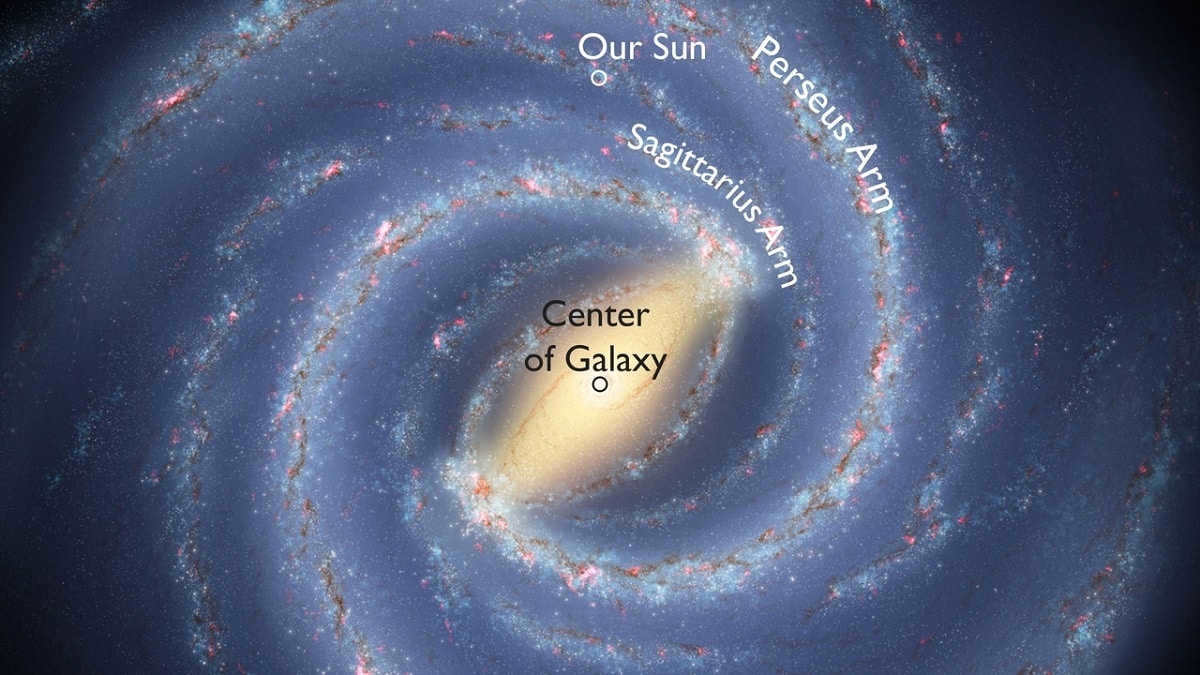
Here are a few of the standout characteristics of this remarkable cosmic structure.
- Form: The Milky Way takes the shape of a spiral, measuring approximately 100,000 XNUMX light-years in diameter. It comprises a flat disk with a central bulge encompassed by a spherical halo of older, less dense stars.
- Stars: It is approximated that the Milky Way harbors around 100 billion stars, although the actual count could be even greater. The majority of these stars reside within the galactic disk, while some are found within spiral arms like the Orion arm or the Perseus arm.
- Dark Matter: The Milky Way is thought to possess significant quantities of an enigmatic substance known as dark matter, which lacks the ability to emit light or interact with ordinary matter. Despite the fact that its direct detection has remained elusive, its presence has been deduced from its gravitational influence on stars and visible matter within the galaxy.
- Black holes: The existence of black holes at the core of the Milky Way has been verified, including a supermassive black hole weighing approximately 4 million times the mass of the Sun.
- Gas and dust clouds: In addition, the Milky Way harbors vast clouds of interstellar gas and dust, which serve as the fundamental building blocks for the creation of new stars. These clouds can be identified through the emission of radiation at various wavelengths, such as visible, infrared, and radio light.
- Satellites: The Milky Way boasts a minimum of 50 satellite galaxies, smaller galaxies that revolve around it. The most prominent among these satellite galaxies are the Magellanic Clouds, a pair of dwarf galaxies that can be seen with the naked eye from the southern hemisphere.
- Motion: The Milky Way is hurtling through space at a speed of approximately 630 km/s and is on a direct collision course with the Andromeda galaxy. While this cosmic crash is not expected to occur within the next billion years, the two galaxies will eventually collide and merge into a brand-new galaxy.
These represent just a few of the countless extraordinary characteristics of the Milky Way, the galaxy that serves as our celestial home. The study of the Milky Way and other galaxies provides us with invaluable insights into the structure of the Universe and our own place within it.
The Arms of Our Galaxy
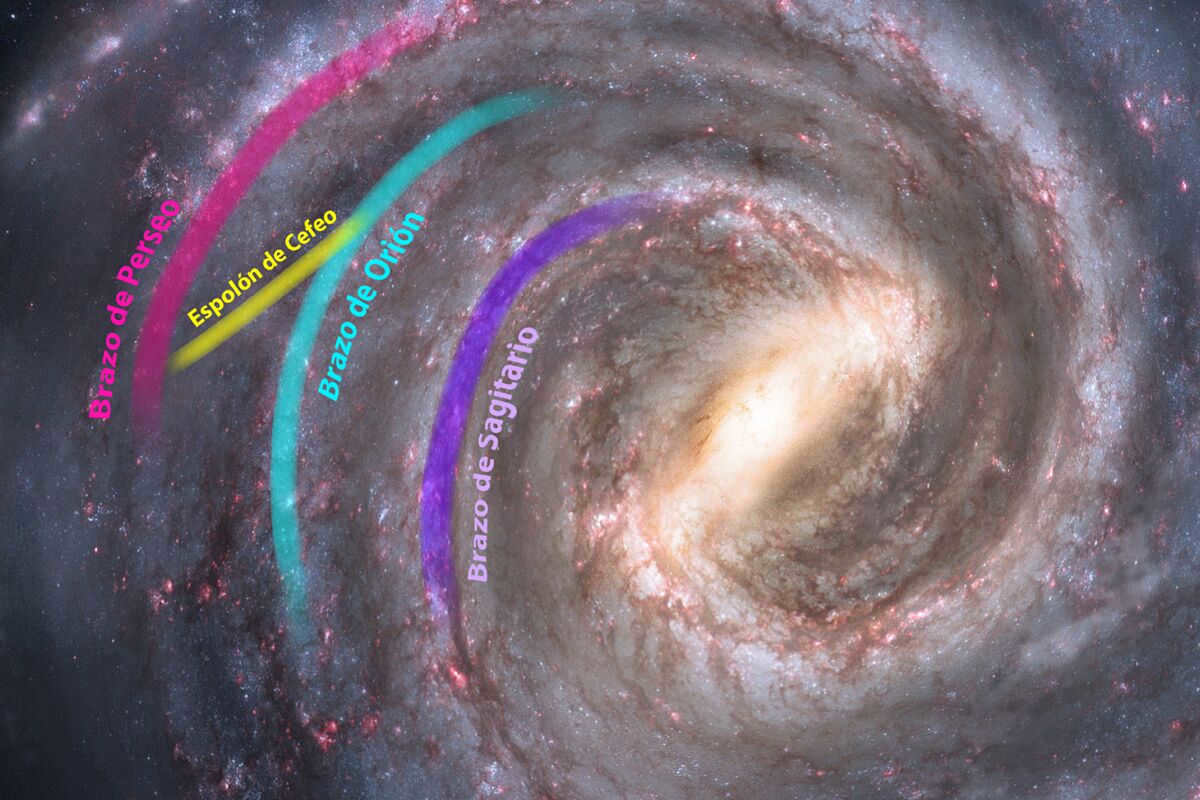
The Milky Way exhibits a spiral morphology, characterized by the presence of multiple spiral arms emanating from its core. These spiral arms represent regions of heightened stellar and gas density compared to the rest of the galaxy. Currently, researchers have identified four primary arms within the Milky Way. Nevertheless, the precise configuration and nature of these spiral arms remain the subject of ongoing scientific inquiry and discussion.
The Perseus Arm, the Sagittarius Arm, the Orion Arm, and the Norma Arm constitute the four primary arms of the Milky Way. Among these, the Perseus Arm and Sagittarius Arm stand out as the largest and most prominent, while the Orion Arm and Norma Arm exhibit a less distinct and more dispersed appearance.
The regions of intense star formation in the Milky Way, known as the spiral arms, are where interstellar gas and dust give birth to new stars. The majority of stars within our galaxy can be found in these spiral arms, and it is within these regions that many captivating celestial objects, including nebulae, star clusters, and massive stars, can be observed.
Distinctive Features of the Milky Way’s Spiral Arms
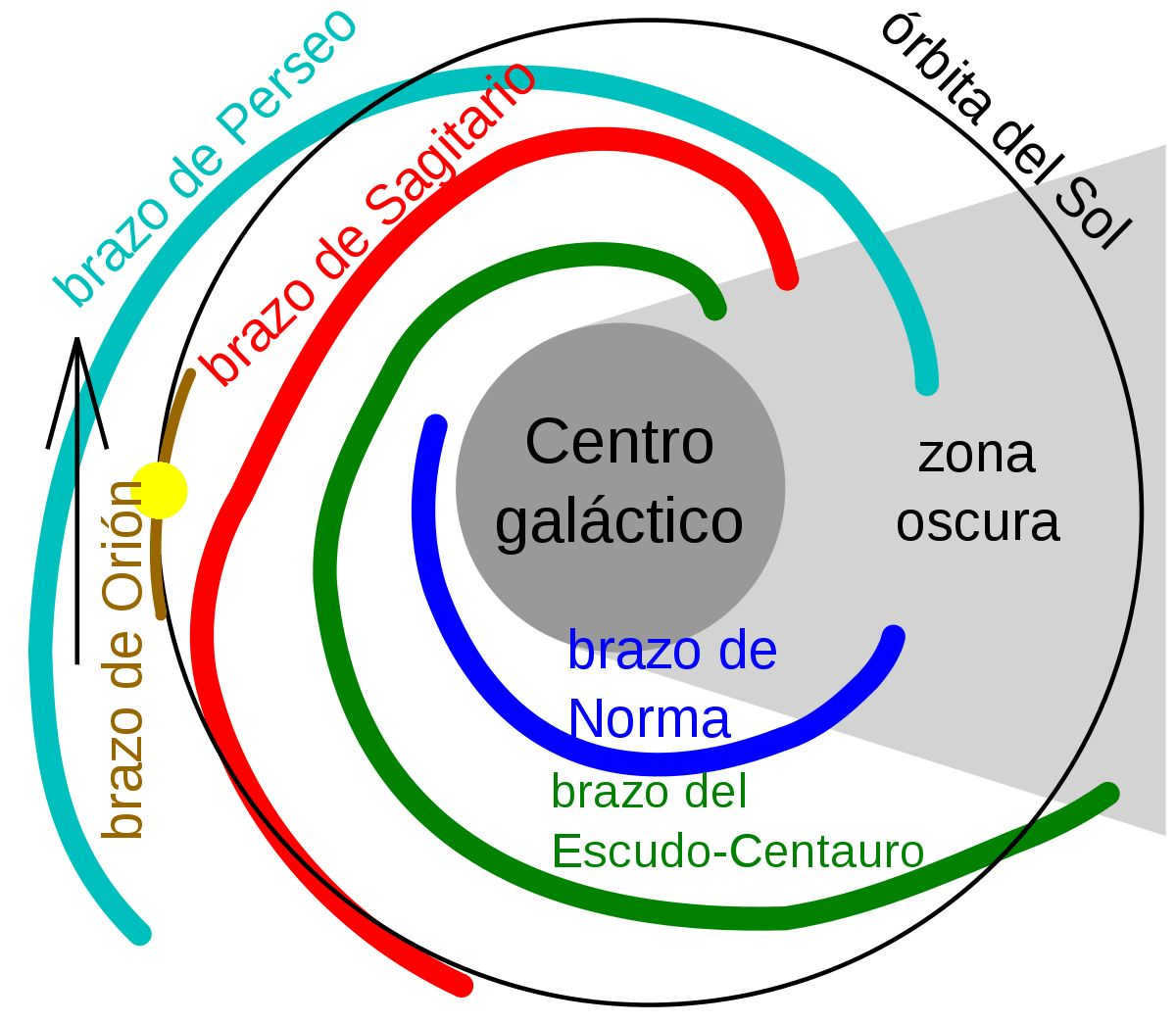

Galactic spiral arms are formed by the condensation of interstellar gas and dust, resulting in the birth of massive stars. These stars release significant amounts of energy, including visible light, infrared radiation, and ultraviolet radiation. This emission of energy is what gives spiral arms their distinct appearance in the night sky.
The presence of spiral arms also has a significant impact on the dynamics of galaxies. The gravitational interaction between gas and stars within the arms can lead to density waves and disturbances in the distribution of matter throughout the galaxy. These disturbances can influence the formation of stars in other regions of the galaxy and influence the overall evolution of the Milky Way.
Furthermore, it should be noted that the spiral arms of the Milky Way are not stationary formations. The entire galaxy, encompassing the spiral arms, revolves around its core at a consistent velocity. As the galaxy rotates, the spiral arms contort in a manner akin to a corkscrew, resulting in their characteristic spiral configuration.
Scientists have employed various methodologies to examine the spiral arms of the Milky Way, such as observing individual stars and detecting X-ray and radio emissions emitted by hot gas and massive stars. Nonetheless, there is still a wealth of knowledge to be gained regarding the structure and dynamics of spiral arms, and ongoing research in this realm remains an active pursuit within the field of astronomy.
The Milky Way is the galaxy where our solar system is situated, and it is therefore the place where we reside and gain knowledge about the cosmos. Our comprehension of the universe and our position within it is significantly impacted by the Milky Way, its structure, and its development.
Furthermore, the Milky Way holds importance as it offers us a stable and suitable habitat for life. Our galaxy houses numerous stars, many of which resemble the Sun. These stars possess planetary systems that can potentially sustain life, much like our solar system. Moreover, the Milky Way encompasses regions where new stars and planets are being formed, granting us valuable insights into the formation of our own solar system and Earth.
The Milky Way plays a crucial role in scientific research. By observing and examining our galaxy, including its structure, history, and evolution, we can gain a better understanding of how galaxies in the universe formed and developed. Furthermore, the Milky Way is also a significant subject of investigation in the quest for extraterrestrial life, given its proximity and accessibility.
I trust that this information will enhance your knowledge regarding the arms of the Milky Way and its distinct characteristics.
Rest assured that the content of this article adheres to our strict editorial ethics guidelines. Should you come across any errors, kindly click here to report them.
For a comprehensive article on the topic, please visit the Network Meteorology and Astronomy section, specifically focusing on the Sleeves of the Milky Way.
Astronomy and its related fields have played a crucial role in numerous groundbreaking discoveries. One such discovery has been the determination of the precise shape of galaxies, including our very own Milky Way. Within its structure lies a significant region known as Orion’s arm. But what exactly is this region?
Over time, the secrets of the universe have gradually been unraveled, providing mankind with a wealth of knowledge. While this particular structure is not relatively new, it greatly aids in our understanding of the galaxy’s behavior. Additionally, it is the special area where the solar system gives rise to life, making it the home of Earth.
The precise knowledge of the Orion arm is of utmost importance.
By delving into the secrets of the universe, gradually, its rewards have been reaped. As time passes, fresh discoveries have emerged, playing a vital role in advancing intellectual growth.
A perfect illustration of this phenomenon is the exploration of galaxies and their overall framework. Specifically, the Milky Way, which houses our solar system, has become the primary subject of scrutiny.
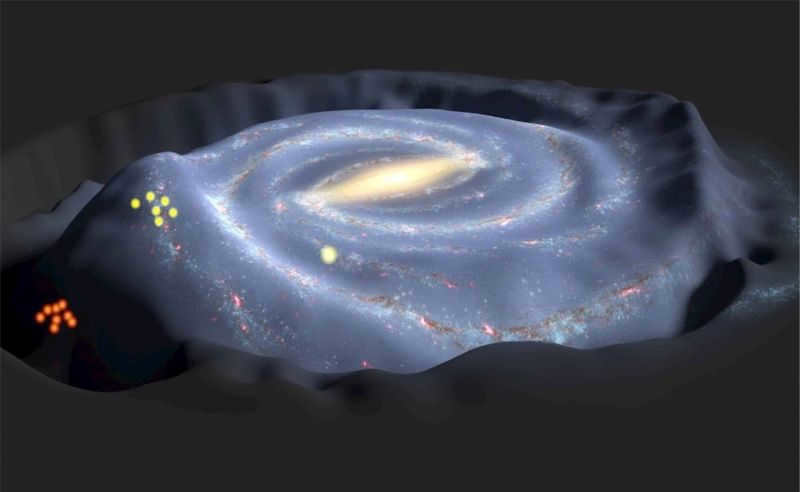
Over time, astronomers have made a significant discovery – they have identified distinct sections within our galaxy, known as arms. Among these arms is the well-known Orion arm, which gets its name from its close proximity to the Orion constellation.
The Orion arm is of great significance because it is the specific location of our solar system and planet Earth. By studying its composition, movements, and other characteristics, scientists can gain valuable insights into the vastness of space.
Notably, the Orion arm is not only home to our solar system, but also to other major cosmic entities. Within this arm, you can find the awe-inspiring Orion Nebula, along with various other prominent celestial bodies.
Among the numerous clusters in the galaxy, we can find the Swan X cluster, Polaris, and various others. As if that wasn’t sufficient, this particular region of the Milky Way is continuously expanding, harboring even more enigmatic wonders. Undoubtedly, it stands as one of the most abundant locations in the galaxy, where life thrives.
The Current State of the Milky Way and the Orion Arm
Extensive studies on galaxies have revealed that their shapes differ based on their composition. For instance, there are those that possess a spiral shape, similar to the Milky Way. Moreover, each section of the Milky Way or active spiral is referred to as an arm. Consequently, the Milky Way and the Orion arm are interconnected, with one being an integral part of the other.
One of the distinguishing features of the Milky Way is its spiral shape, which is formed by nine arms. The Orion arm is one of these arms, each with its own unique characteristics and encompassing objects.
Both the Milky Way and the Orion arm play significant roles in the Universe. The Milky Way is responsible for the positioning of the solar system, and the Orion arm specifically denotes its location.
The status of the Orion arm is subject to debate among scientists. Some argue that it is a subsidiary arm of the well-known Perseus arm, while others believe it has evolved enough to be considered independent. Regardless, it is undeniably one of the most important components of the Milky Way.
Indeed, previously, it was believed to be a connection to other regions of the Universe. Therefore, it was referred to as Orion’s Spur for this general purpose.
What do we know about Orion’s Arm of the Milky Way? What are all the specifics?
In the past, the theory was that the Earth was at the center of the universe, encompassing the solar system and everything known. However, thanks to modern astronomy, we now understand that there is a vast cosmos beyond our comprehension.
Based on this research, the Orion arm of the Milky Way has been identified. Through continuous observations of the galaxy, all the components that constitute it have been determined.
Each of the spiral galaxies is characterized by a column or arm with a unique shape. In the case of the Milky Way, it is comprised of a total of 9 of these arms, which collectively give rise to its distinct and significant form.
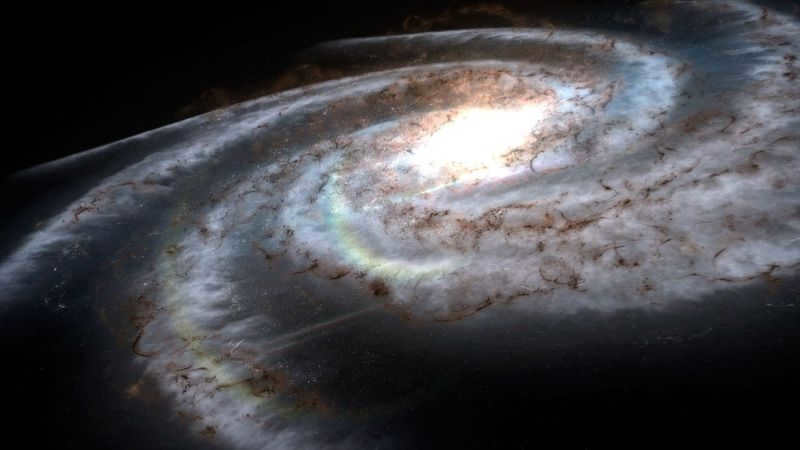

In terms of the Milky Way’s structure, the Orion arm occupies a position between the Sagittarius arm and the Perseus arm. Initially, it was believed to be a satellite arm of the Perseus arm, but recent observations have also classified it as an independent entity.
However, it should be noted that the Orion arm is relatively smaller in size compared to the aforementioned arms. Despite its size, it holds significance due to its precise location in relation to the solar system.
Using advanced telescopes, astronomers have successfully determined the precise location of the solar system. Moreover, the utilization of interferometers has made it easier to create a visual representation of the Milky Way.
As a result, scientists have been able to identify a region within the Orion arm called the Local Bubble. This dense cluster of hydrogen and other substances was once the home of our Solar System. Presently, the Solar System has migrated enough to be visible on the inner edge of the Local Bubble.
This article adheres to our editorial ethics guidelines. If you notice any inaccuracies, please click here to report an error.
Read the full article: postpost “Galaxies” Discover the significance of the Orion arm!
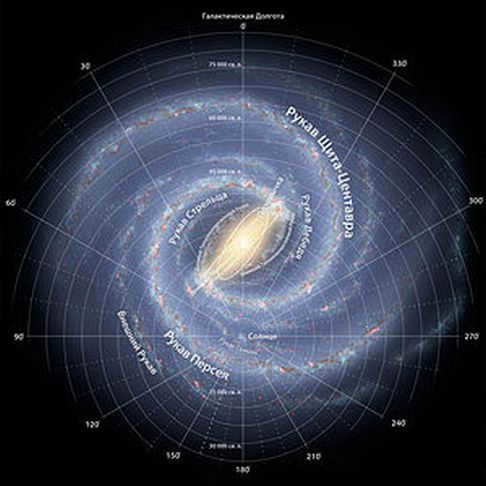
The inquiry into whether our Sun is part of its own expansive system was first undertaken in the XVIII century by William Herschel. He began to speculate that such a stellar system does indeed exist. The final nail in the coffin of this question was hammered in by American astronomer Edwin Hubble in the 1920s, when he provided evidence of the existence of other stellar systems beyond our own. In the following paragraphs, I will provide a description and characterization of the Milky Way galaxy.
Therefore, our galaxy is categorized as a spiral galaxy with a bar, and it has an estimated age of 13.2 billion years. Its diameter spans approximately 30,000 parsecs, and it has an average thickness of around 1,000 light-years. The Milky Way contains a staggering number of stars, ranging from 200 to 400 billion. Determining the mass of our galaxy is a challenging task, as the majority of it is concentrated not within the stars, as initially believed, but rather in the form of dark matter, specifically in the halo, which cannot be directly observed. Rough estimates suggest that the mass of our galaxy ranges from 5-10^11 solar masses to 3-10^12 solar masses.
Similar to other spiral galaxies, the Milky Way is comprised of a nucleus, a disk, spiral arms, and a halo. Additionally, there is a component known as the bar within the Milky Way structure.
Below, we will outline the defining characteristics of the Milky Way galaxy.
Nucleus
The bulge is a dense region at the center of the galaxy, spanning 8 thousand parsecs. From our vantage point on Earth, the galactic nucleus is located in the constellation Sagittarius. Its distance from the Sun is approximately 8.5 kiloparsecs, equivalent to 27,700 light-years.
From Earth’s perspective, the central region of the Milky Way appears as a strong radio emission known as Sagittarius A. It is comprised of three individual components:
Sagittarius A* (Sagittarius A*, Sgr A*).
Sagittarius A* is the most massive entity located at the center of our galaxy. It is believed to be a supermassive black hole, weighing approximately 4.3 million times the mass of our Sun. This colossal black hole is surrounded by a vast cloud of hot gas that emits radio waves, spanning an impressive distance of 1.8 parsecs. Furthermore, it is speculated that there is another, smaller black hole orbiting Sagittarius A*, with a mass ranging from 1000 to 10000 times that of our Sun.
The remnants of a supernova star that detonated between 35,000 and 100,000 years in the past. Owing to the potent gravitational distortion caused by Sagittarius A*, the object known as Sagittarius A East spans 25,000 light years.
Sagittarius A West
Comprising of three gas-dust clouds and a cluster of massive stars, Sagittarius A West revolves around Sagittarius A* at a velocity of 1000 km/s.
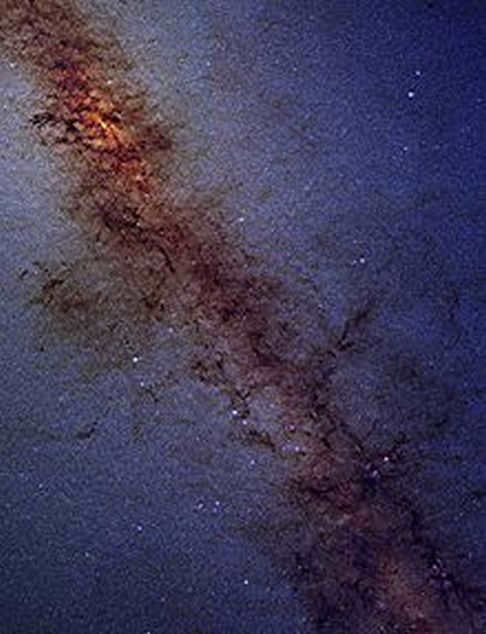
The Galactic Disk
The galactic disk, which contains spiral arms and a central junction, is the defining feature of a galaxy. In the case of the Milky Way, the disk spans a distance of 100,000 light-years. This rotating component of a spiral galaxy is responsible for the spiral shape of the galactic arms.
Interestingly, the rotation of our galaxy’s disk is not uniform. The angular velocity of the disk varies depending on its distance from the galactic center. From the bulge to 2,000 light-years, the angular velocity increases from zero to 200-240 km/s, then slightly decreases, increases again, and remains constant towards the edges of the disk. The total mass of the Milky Way’s disk is estimated to be 150 billion times that of our Sun.
Spiral Arms in the Milky Way Galaxy
The spiral arms found in the Milky Way are integral parts of its disk structure. Specifically, there are seven distinct spiral arms that can be identified:
- The Shield-Centauri arm
- The Perseus arm
- The Sagittarius arm
- The Swan arm
- The Orion arm
- The near three-kiloparsec arm
- The distant three-kiloparsec arm
The first two arms, the Shield-Centauri arm and the Perseus arm, are the most prominent and dominant in size.
Our solar system is located within the Orion arm, approximately 8.5 thousand parsecs away from the galactic center of the Milky Way. It orbits around the center at a velocity of 240 km/s, completing a full revolution every 200 million years. By extrapolating this data, we can estimate that over the course of the solar system’s existence, it has completed just over 20 revolutions around our galaxy!
Halo
The halo is a spherically shaped structure that envelops our galaxy and stretches out beyond its boundaries for a distance of up to 10 thousand sv. years. It is estimated to have a temperature range of 5-10 5 K.
Comprised of hot gas, dark matter, and stars, the halo contains a population of ancient and low-mass stars, predominantly in the form of globular clusters.
Lintel
The lintel of the Milky Way consists of red stars and is encompassed by an area referred to as the “Five Kiloparsec Ring”. This ring contains the majority of the galaxy’s molecular hydrogen and is therefore the most active region for the formation of stars in the entire Milky Way.
The lintel spans a length of 27,000 light-years and traverses the center of the galaxy at an inclination of 34°-44° relative to the line connecting the Solar System and the center of the Milky Way.
If you were to observe our galaxy from the Andromeda Nebula, the lintel would appear as a highly luminous section of it.
Our galaxy is accompanied by numerous satellites, which are also galaxies, and are part of the Local Group. The most renowned among them, and the closest to us, are the Large and Small Magellanic Clouds – irregular galaxies of a distinct type, visible only in the Southern Hemisphere of Earth and even observable with the naked eye.
The previous section provided an overview of the attributes of the Milky Way galaxy, allowing for a comprehensive understanding of our very own stellar system.
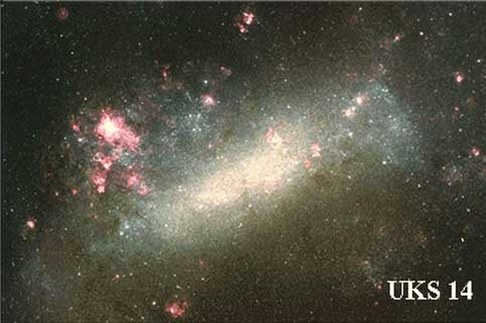
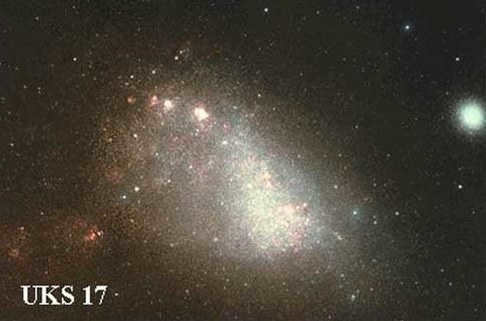
If you enjoyed reading this article, please feel free to share it.
The celestial sky has always captivated human beings since ancient times. Throughout history, brilliant minds from various cultures have attempted to comprehend our position in the universe and to envision and explain its structure. With the advancement of scientific knowledge, we have transitioned from romantic and religious interpretations to logically verified theories backed by extensive empirical evidence gathered through the study of the vast expanse of space. Nowadays, even a schoolchild possesses a basic understanding of our Galaxy’s appearance based on the latest research findings, as well as the origins of its poetic name and its projected future.
Origin of the name
The term “Milky Way Galaxy” is essentially redundant. The word “Galactikos” in ancient Greek roughly translates to “milky”. This is how the people of Peloponnese referred to the group of stars in the night sky, believing it to be created by the enraged goddess Hera, who splashed her breast milk after refusing to feed Heracles, the illegitimate son of Zeus. These milk droplets formed a path of stars that can be seen on clear nights. Centuries later, scientists discovered that the visible stars are only a small fraction of the countless celestial bodies that exist. They named the space in the Universe where our planet is located the Galaxy or Milky Way system. Once the existence of similar formations in space was confirmed, the term “Galaxy” became a universal name for them.
An insider’s perspective
Ancient Greek knowledge had limited impact on our understanding of the structure of the universe, particularly the part that encompasses the solar system. Over time, our perception of our galaxy has evolved from Aristotle’s belief in a spherical universe to modern theories that account for black holes and dark matter.
However, determining the true shape of our galaxy poses challenges because we are within it. To gain an accurate understanding, we would need an external viewpoint from a significant distance. Unfortunately, this is not currently possible. Instead, scientists rely on collecting data about the galaxy’s structure and comparing it to information about other cosmic systems that can be studied.
Based on the gathered information, we can confidently state that our Milky Way has a disk-like structure with a bulge in the center and spiral arms radiating outwards. These arms consist of the most luminous stars within the galaxy. The estimated diameter of the disk exceeds 100,000 light-years.
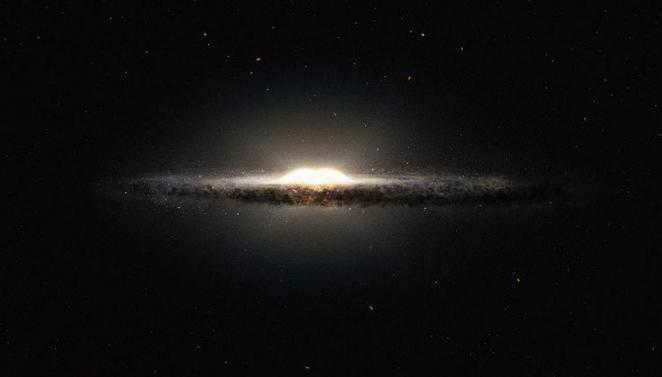
Structure
The arrangement of the Galaxy is obscured by interstellar dust, which poses a challenge for studying the system. The application of radio astronomy techniques helps to overcome this obstacle. Radio waves with specific wavelengths can penetrate through any hindrances, providing us with the desired imagery. Our Galaxy is known to possess a diverse structure.
For convenience, we can identify two interconnected components: the halo and the central disk. The halo, as a subsystem, exhibits the following characteristics:
- It assumes a spherical shape;
- The bulge is considered the center of the halo;
- The middle section of the halo exhibits the highest concentration of stars, while the density significantly decreases towards the edges;
- This region of the galaxy rotates at a relatively slow pace;
- The halo is primarily inhabited by aging stars with relatively small masses;
- A significant portion of the substructure is filled with dark matter.
The stellar density of the galactic disk is much greater than that of the halo. The arms of the galaxy contain both young and newly forming stars.
The central region and the core
The “heart” of the Milky Way is situated within it, and without further exploration, it is difficult to gain a complete understanding of our galaxy. In scientific literature, the term “core” can either refer solely to the central region with a diameter of just a few parsecs, or it can encompass the bulge and the gas ring, which are believed to be the birthplace of stars. In the following discussion, we will use the first definition of the term.
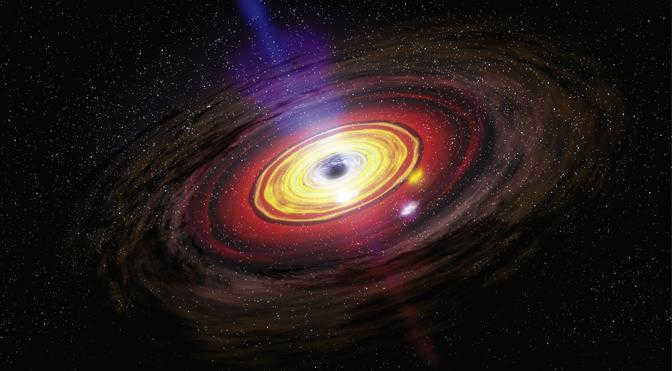
Observing the center of the Milky Way is a challenging task due to the presence of cosmic dust that obstructs the view in visible light. However, advancements in infrared imaging have significantly enhanced astronomers’ understanding of the core region.
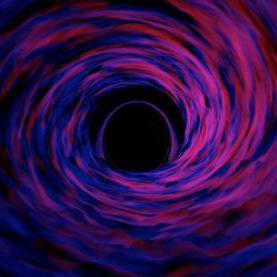
Information regarding the distinct characteristics of radiation within the central region of our galaxy has prompted scientists to theorize the presence of a black hole in its core. This black hole is estimated to have a mass exceeding 2.5 million times that of the Sun. Additionally, researchers propose the existence of another black hole, albeit smaller in size, orbiting around this primary black hole. Based on current understanding of the structure of the universe, it is believed that similar objects are commonly found in the central regions of most galaxies.
The combined impact of black holes on stellar motion results in unique modifications to the appearance of our Galaxy, including atypical alterations in orbits, particularly in proximity to the solar system. Research into these trajectories and the correlation between velocity and distance from the galactic center has formed the foundation of the rapidly advancing theory of dark matter. The true nature of dark matter remains an enigma, as it is only discernible through its gravitational effects on orbits and is believed to constitute the vast majority of all matter in the Universe.
If you were to scatter all the cosmic dust that conceals the nucleus from our view, an astonishing image would emerge. Despite the prevalence of dark matter, this region of the Universe is teeming with light, radiated by an immense number of stars. There exist hundreds of times more stars per unit of space compared to those in the vicinity of the Sun. Approximately ten billion of these stars compose the galactic bar, also known as a jumper, which possesses an irregular shape.
The Galactic Peanut
Through the examination of the central region of the system using long-wavelength measurements, intricate infrared pictures have been obtained. It appears that our Galaxy possesses a core structure that bears a striking resemblance to a peanut encased in a shell. This peculiar “nut” is comprised of over 20 million red giants, which are stars that are bright but not as hot.
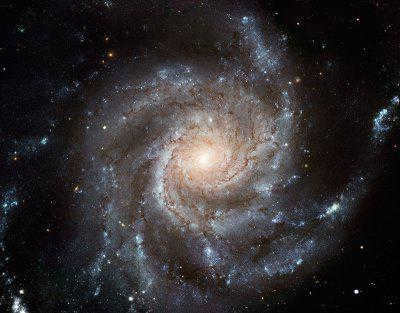
The arms of the Milky Way galaxy diverge from the ends of the bar.
The research related to the discovery of the “peanut” in the central region of the star system not only provided insight into the structure of our Galaxy but also aided in understanding its evolution. Initially, there existed a regular disk in the vast expanse of space, where, over time, a bar formed. Due to internal processes, the bar underwent changes in shape and eventually resembled a walnut.
Activity can be observed in both the lintel and the spiral arms of our Galaxy. These sections were given names based on the constellations where they were discovered, such as the arms of Perseus, Swan, Centaurus, Sagittarius, and Orion. The Solar System, which is located near Orion at a distance of at least 28 thousand light years from the core, is said to have specific qualities that experts believe made the development of life on Earth possible.
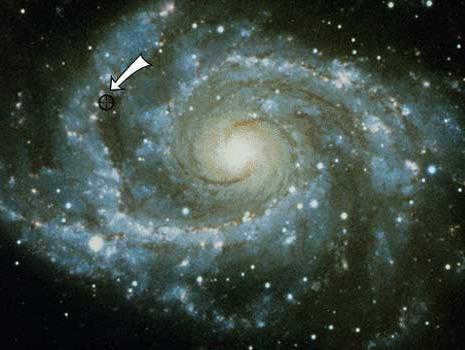
The rotation of our galaxy and our solar system is interconnected. However, the movements of the individual components within this rotation are not synchronized. Occasionally, stars can be found in the spiral branches or separated from them. The only exception to this are the stars located on the boundary of the co-rotational circle, which do not undergo these “journeys”. The Sun, for example, is one such star, and its position on the boundary protects it from the intense processes occurring within the arms. Any slight deviation from this position would nullify the other advantages that facilitate the development of organisms on our planet.
The sky adorned with diamonds
The Sun is just one of numerous celestial bodies that fill our galaxy. The stars, whether solitary or clustered, amount to over 400 billion based on the most recent data. Among them is Proxima Centauri, which belongs to a triple-star system along with Alpha Centauri A and Alpha Centauri B, with Proxima Centauri being the closest to us. Shining brightly in the nighttime sky, Proxima Centauri is accompanied by Sirius A, which is the brightest point in the night sky. Sirius A’s luminosity is estimated to be 17-23 times greater than that of the Sun. Sirius A is not alone; it has a companion named Sirius B.
Children often start to explore the appearance of our Galaxy by searching for Polaris or Alpha Minor Bear in the heavens. Its popularity stems from its location above Earth’s North Pole. Polaris is significantly more luminous than Sirius (almost two thousand times brighter than the Sun), but it is unable to rival Alpha Canis Majoris for the distinction of being the brightest due to its distance from Earth (estimated to be 300 to 465 light years away).
Categories of Celestial Bodies
The various celestial bodies not only differ in terms of their luminosity and distance from the observer. Each celestial body is also assigned a specific size (with the unit of measurement being the corresponding parameter of the Sun), surface temperature, and color.
The most awe-inspiring sizes can be found among supergiants. Neutron stars, on the other hand, are known for having the highest concentration of matter per unit volume. The color of a celestial body is closely related to its temperature:
- The coldest celestial bodies are red in color.
- Celestial bodies with a surface temperature of around 6,000ºK, similar to that of the Sun, appear yellow.
- Luminaries that are white or blue in color have temperatures exceeding 10,000ºK.
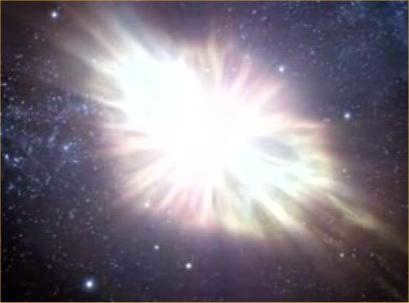
The future of our Milky Way galaxy
Our Milky Way galaxy, along with other galaxies, is in constant motion and interaction. Scientists have discovered that our galaxy has absorbed neighboring galaxies multiple times in the past. This process is expected to continue in the future, with the inclusion of the Magellanic Cloud and several other dwarf systems over time. However, the most significant event is predicted to occur in 3-5 billion years, when our galaxy will collide with its only visible neighbor from Earth, resulting in the transformation of the Milky Way into an elliptical galaxy.
The vastness of the cosmos is truly astounding. It can be challenging for the average person to comprehend the sheer scale of not just the Milky Way or the entire Universe, but even our own planet, Earth. Thankfully, advancements in scientific knowledge allow us to grasp at least a rough idea of the magnificent world in which we exist.
Submitted by: Thiago Ize & Chris Johnson, Scientific Computing and Imaging Institute.
The formation of spiral arms in disk galaxies has been a source of puzzlement for astrophysicists for as long as they have been studying them. Throughout the years, they have reached two main conclusions. One is that the structure of these galaxies is shaped by variations in gravity, which mold gas and dust into recognizable patterns. The other is that the spiral arms may appear and disappear at random intervals.
Scientists are now starting to apply their discoveries to findings that are based on state-of-the-art supercomputer simulations. These simulations involve the movement of millions of “stellar particles” that imitate the gravitational and astrophysical forces that give rise to a natural spiral structure. The team of researchers from the University of Wisconsin-Madison and the Harvard-Smithsonian Center for Astrophysics is thrilled by these findings and suggests that the models may hold important insights into the formation of spiral arms.
“For the first time, we demonstrate that stellar spiral arms are not temporary features, as has been debated for many years,” says astrophysicist Elena D’Onghia of UW-Madison, who spearheaded the new study alongside her Harvard colleagues Mark Vogelsberger and Lars Hernquist.
“According to Vogelsberger, spiral arms are characterized by their ability to self-preserve, remain permanent, and exhibit remarkable longevity.”
When spiral structure emerges, it is likely the most prevalent manifestation of the Universe. Our own galaxy is considered to possess this form, and roughly 70% of nearby galaxies also exhibit a spiral structure. If we broaden our perspective, it becomes apparent that numerous phenomena adopt this familiar configuration. The act of sweeping dust with a broom causes particles to arrange themselves in a spiral pattern. Similarly, the act of draining water creates a whirlpool, while various weather formations take on a spiral shape. This universal occurrence is not a coincidence; it is a direct result of gravity being influenced. In the case of galaxies, the disturbance is caused by a massive molecular cloud. These clouds, as simulated by D’Onghia, an astronomy professor at UW-Madison, serve as “disrupters of order” and possess the capability to not only initiate the formation of spiral arms but also sustain them indefinitely.
So, what is the deal with companion galaxies? Can the spiral structure be caused by their proximity? The latest research also takes this into account in calculations and models for “solitary” galaxies. However, that’s not the whole story. According to Vogelsberger and Hernquist, the new computer-generated simulation focuses on refining observational data. They closely examine high-density molecular clouds and “gravity-induced holes in space” that serve as “mechanisms governing the formation of the characteristic arms of spiral galaxies.”
Until then, we understand that the spiral structure is not a mere coincidence; it is likely the most prevalent form of all.
The situation with our Galaxy is identical. It is a known fact that we reside in the same spiral galaxy as M31, also known as the Andromeda Nebula. However, our knowledge of the spiral arms of M31 surpasses our understanding of our own Milky Way. We are not even certain about the number of spiral arms present in our galaxy.
In 1958, Jan Hendrik Oort made the first attempt to determine the shape of the spiral arms of the Milky Way. He created a map of the distribution of molecular gas in our Galaxy using measurements taken on neutral atomic hydrogen waves. However, his map did not include the sector of the outer Milky Way disk “above” the Earth, and it also contained inaccuracies due to incorrect distance determinations and modeling errors. As a result, the Oort map was asymmetrical and could not be explained by a reasonable spiral pattern model. Nevertheless, it was known even at that time that atomic hydrogen is concentrated in spiral arms.
Several scientists have subsequently generated more elaborate maps by studying the wave patterns of atomic hydrogen and the CO molecule. These maps were presented in both two-dimensional and three-dimensional formats. The majority of these maps were developed using the fundamental principles of circular rotation. While some of these maps depicted two spiral arms of molecular gas, others showed four. There was never a consensus among scientists regarding which model was more accurate.
A new research project called “Astronomical Scientific Picture of the Day” (ANKa) has been reported by Sergey Popov, an astronomer from GAISH. The project, led by Peter Englmaier from the Institute for Theoretical Physics at the University of Zurich, aims to study the spiral pattern of our star system. By analyzing the distribution of molecular CO and molecular hydrogen, the study reveals that the pattern is more complex than previously thought. Interestingly, the study suggests that our star system has both two and four arms. This finding challenges the traditional understanding of spiral patterns in galaxies.
There is ongoing debate among astronomers regarding the number of spiral arms in our galaxy, with two or four being the main contenders. While many scientists lean towards the idea of four arms, recent observations from NASA’s Spitzer telescope present an alternative possibility – that our galaxy actually has two arms. In 2013, astronomers studied star-forming regions and claimed to have discovered two previously unknown arms, thus bringing the total count back up to four.
However, evidence supporting the existence of four arms in the Milky Way has been steadily accumulating over time. A team of Brazilian astronomers conducted a study using star clusters found within their birth clouds to track the structure of the galaxy. The team, from the Federal University of Rio Grande do Sul, concluded that their findings support the existence of four spiral arms in the Milky Way, including the Sagittarius, Perseus, and outer arms.
“Even though we have made attempts to enhance our comprehension of the arrangement of the galaxy, uncertainties persist. The quantity and form of the spiral arms in the galaxy are not agreed upon,” stated D. Camargo, the main author of the study. He further explained that the Sun’s position within the obscured galactic disk has played a significant role in hindering our understanding of the overall structure of the Milky Way. Essentially, we lack a panoramic view of our Galaxy.
The research team discovered that young embedded clusters serve as effective indicators of galaxy structure. “The findings indicate that most of the galaxy’s embedded clusters are located within spiral arms,” the team reported. They also observed that star formation often occurs following the breakup and fragmentation of large molecular clouds within spiral arms. As a result, these young embedded star clusters, which form later, provide valuable insights into the structure of galaxies as they tend to remain close to their birthplace.
The research team utilized data gathered by NASA’s WISE infrared telescope to detect youthful clusters that are still enclosed within their original clouds, often concealed by substantial amounts of dust. Infrared starlight is less obstructed by dust particles compared to visible light, granting astronomers an unparalleled perspective. In fact, the team has discovered seven previously unknown enclosed clusters, including ones called Camargo 441-444, which might be part of a larger cluster within the Perseus arm. They have put forth the theory that the immense molecular cloud is being compressed by the spiral arm, potentially triggering the formation of stars in multiple clumps, subsequently leading to the emergence of various star clusters with similar ages.
According to astronomers, the human eye is capable of perceiving approximately 4.5 thousand stars. It’s remarkable to think that this is just a fraction of the vast and awe-inspiring tapestry of the universe. In the Milky Way Galaxy alone, there exist over two hundred billion celestial bodies, although scientists have only been able to observe around two billion of them.
The Milky Way is classified as a spiral galaxy with a central bar, forming a colossal system of gravitationally bound stars in the expanse of space. It is part of the Virgo Supergroup, along with the neighboring Andromeda and Triangle galaxies, as well as more than forty dwarf companion galaxies.
The Milky Way is estimated to be over 13 billion years old and it has formed between 200 to 400 billion stars and constellations, along with numerous gas clouds, clusters, and nebulae. When observing a Universe map, the Milky Way appears as a disk with a diameter of 30 thousand parsecs (1 parsec equals 3.086*10 to the 13th degree of kilometers) and an average thickness of around a thousand light-years (one light-year is approximately 10 trillion kilometers).
Astronomers face difficulties in determining the exact weight of the Galaxy due to the majority of its weight being composed of dark matter, which neither emits nor interacts with electromagnetic radiation. Rough calculations suggest that the weight of the Galaxy ranges from 5*10^11 to 3*10^12 solar masses.
Similar to all other celestial objects, the Milky Way rotates on its axis and traverses through the vast expanse of the Universe. It is important to note that during its journey, galaxies frequently collide with one another in the cosmic realm. When a larger galaxy encounters a smaller one, it absorbs it. However, when galaxies of the same size come into contact, it triggers a burst of active star formation.
Consequently, astronomers hypothesize that in approximately 4 billion years, the Milky Way and the Andromeda Galaxy will collide within the Universe. These two galaxies are currently approaching each other at a velocity of 112 km/s, resulting in the emergence of new constellations in the cosmos.
Regarding its rotational motion, the Milky Way moves in an uneven and even chaotic manner through space. This is due to the fact that each star system, cloud, or nebula within it possesses its own unique speed and orbits of varying types and shapes.
Galaxy’s Composition
Upon close examination of a spatial map, one can discern the Milky Way’s highly compact structure, resembling a “flying saucer” with the solar system positioned near its periphery. The Milky Way Galaxy is comprised of several elements, including a core, a bulge, a disc, spiral arms, and a halo.
The core
The core can be found in the Sagittarius constellation, where the origin of non-thermal radiation is situated, having a temperature of approximately ten million degrees Celsius, a phenomenon unique to galactic cores. At the heart of the core lies a cluster – a bulge, comprised of numerous old stars moving in elongated orbits, many of which are nearing the end of their lifecycle.
As such, a while back, astronomers from the United States stumbled upon a region measuring 12 by 12 parsecs in this area, filled with deceased and dying constellations.
At the heart of the core lies a supermassive black hole, a region in space where gravity is so strong that even light cannot escape. Orbiting this black hole is a smaller black hole. These two black holes have a powerful gravitational pull on nearby stars and constellations, causing them to follow unusual trajectories compared to other celestial bodies in the universe.
The center of the Milky Way is also characterized by a high concentration of stars, which are much closer together compared to the outer regions. The motion of these stars is not dependent on their distance from the core, resulting in an average rotation speed ranging from 210 to 250 km/s.
The leaper
The galactic leaper spans a distance of 27,000 light-years as it traverses the central region of the Milky Way at a 44-degree angle relative to the traditional path between the Sun and the core. Comprised primarily of ancient red stars, totaling around 22 million in number, this celestial phenomenon is encircled by a band of gas that holds the majority of the molecular hydrogen and serves as the prime location for prolific star birth. As per one hypothesis, this juncture experiences such vigorous star formation due to its facilitation of gas flow, which ultimately gives rise to new constellations.
A disk
The Milky Way is a flat structure comprising of constellations, gas nebulae, and particles. Its diameter measures approximately 100 thousand light years, with a thickness of several thousand light years. The disk rotates at a significantly faster rate compared to the corona, which is positioned at the outer regions of the Galaxy. The rotational speed varies at different distances from the core and exhibits an irregular pattern, ranging from zero at the core to 250 km/h at a distance of 2 thousand light years from it. Gas clouds, young stars, and constellations are primarily concentrated near the disk’s plane.
Layers of atomic hydrogen surround the outer regions of the Milky Way, extending into space up to one and a half thousand light years from the outermost spirals. While this hydrogen is ten times thicker compared to the center of the Galaxy, its density is proportionally lower. Scientists have recently observed dense clusters of gas on the outskirts of our galaxy, with temperatures reaching 10,000 degrees Celsius and sizes spanning several thousand light-years.
Spiral Arms
The Galaxy has five primary spiral arms known as Swan, Perseus, Orion, Sagittarius, and Centauri. These arms have varying sizes ranging from 3 to 4,500 parsecs. The Sun is situated on the inner side of the Orion arm. However, the distribution of molecular gas within the arms is uneven and does not always conform to the rotational patterns of the Galaxy. This inconsistency introduces errors in our understanding of the Galaxy’s dynamics.
Corona
The corona of the Milky Way is depicted as a spherical halo that stretches out into space for a distance of five to ten light-years beyond the Galaxy. Its composition includes globular clusters, constellations, individual stars (primarily old and low-mass stars), dwarf galaxies, and hot gas. All of these celestial bodies orbit around the nucleus in elongated paths, and the irregular motion of certain stars is such that the speed of nearby stars can vary significantly, resulting in an extremely slow rotation of the corona.
One hypothesis suggests that the corona formed as a consequence of the Milky Way absorbing smaller galaxies, thus making it their remnants. Preliminary evidence suggests that the age of the halo exceeds twelve billion years, making it the same age as the Milky Way itself, and indicating that star formation within the corona has already ceased.
Space Full of Stars
When gazing at the night sky filled with stars, one can observe the Milky Way from any location on Earth in the form of a luminous strip (since our solar system is situated within the Orion arm, only a portion of the Galaxy is visible).
The Milky Way map reveals that our sun is positioned near the edge of the Galaxy’s disk, with a distance of approximately 26-28 thousand light years to its core. Considering that the Sun travels at a speed of around 240 km/h, it takes about 200 million years for it to complete one revolution (over its entire existence, our star has not yet completed a full orbit around the Galaxy, not even thirty times).





